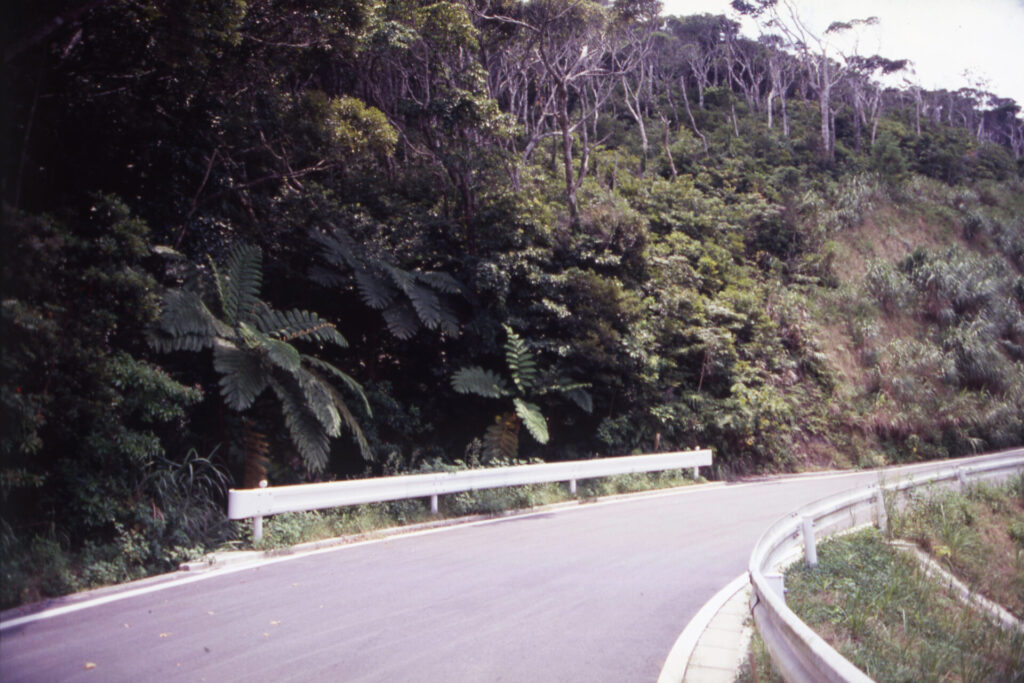Ōkuni Rindō

A multi-purpose forestry road located in the northern part of the main island, from Ogimi Village to Kunigami Village, cutting through the ridges of Yanbaru mountains. Its construction began in 1977; 17 years and some general expenses summing to an enormous outlay of 5 billion Japanese yen were invested for its completion, with a total length of 35.5 km.
It was named Ōkuni Rindō, or Ōkuni Forestry Road, given that it runs from Ōgimi to Kunigami.
From 1977 when the construction began, until the mid-1980s, most Okinawans and nature conservation groups did not question the building of dams and other projects; they were only captivated in the protection of precious wild animals from the deforestation of Yanbaru forest caused by forestry, including the massive lumbering at that time. For example, noguchigera1 is unique to Yanbaru.
Ōkuni Rindō was constructed under such advantage, and by the time Okinawans and conservationists became aware of the gravity of the matter, 90% of the road was already completed. It is an asphalt-paved super-duper gorgeous forestry road as an incarnation of nature destruction itself, with some story behind it.
And just like how many environmental economists have pointed out, the so-called “wide area forestry roads” or “multipurpose forestry roads” in Japan is yet unclear on what real purpose it was constructed, spending such time and great expense.
According to the leak by some officials, settlements of forestry roads in Yanbaru such as the Ōkuni Rindō influence the future of Okinawa (that’s what the officials say), as it seems to be majorly related to the construction of dams. Well, which would provide a genuine richness—a life with abundant water to play ducks and drakes, or the existence of an ample green forest and the Mother Ocean where countless life is born?
Withal, the Ōkuni Rindō—an incarnation of nature destruction—is offering an excellent scene for environmental education to teach about the effect of unconsidered developments on the environment. Norimen giri, the steep slopes which were meant to be a consideration for the environment, are repeating collapses with every heavy rain and are costing more than 100 million Japanese yen every year to restore, to this very day. Thus, the road is acting out the watchword for the conservation movements of these days: “to build sustainable projects.” A quite an ironic fact, indeed.
Editor’s Note:
- A Pryer’s woodpecker.









































































































































































































































